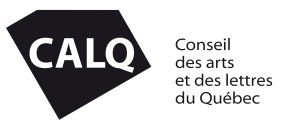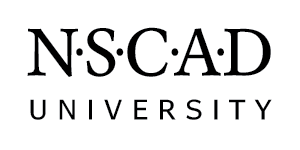BIOTA2018
Prospective Futures: The Aurelia Project (May-December 2018)
Prospective Futures: The Aurelia Project is a collaboration between Saint Mary’s University Senior Research Fellow, Dr. Linda Campbell, and WhiteFeather Hunter, Visiting Scholar/ Bioartist-in-Residence at SMU. The project also includes significant collaboration and contributions by Environmental Studies BSc Honours student, Brittany Hill, in co-developing and co-leading a goldenrod ecotoxicology and in-situ remediation. Brittany will apprentice on natural dye preparation, bacteriological protocols and the field of BioArt with WhiteFeather Hunter as a part of her honours thesis project. The project is part of the BIOTA series, facilitated by IOTA Institute, Halifax and is the first Faculty of Science bio-art residency at Saint Mary’s University. IOTA works with contemporary artists who bridge the topic of life sciences through the arts, with the aim of developing curatorial methods and methodologies involved while developing creation and presentation opportunities for artists who engage in STEM fields.
Prospective Futures: The Aurelia Project centers around healing and recovery of highly contaminated legacy gold mine tailing sites in Nova Scotia, using both native plant species, Solidago canadensis (Canadian goldenrod)/ Solidago gigantea (Giant goldenrod), and an extremophilic bacterial species, Cupriavidus metallidurans, towards conducting soil bioremediation research, experimentation and dissemination. Cupriavidus metallidurans produces micro-particles of pure gold as a metabolic byproduct in environments that contain heavy metals, and goldenrod is effective in phytoremediation (uptake of toxins such as arsenic, helping to remove them from the soil). The project will also consult on Mi’kmaq lived experiences with ecology and land stewardship, as well as utilize embodied visual communication strategies that include the localized dialect of Maritime Sign Language.
Saint Mary’s University and the various legacy gold mine tailings sites are in K’jipuktuk, Mi’kma’ki, the Ancestral Territory of the Mi’kmaq First Nation.
The project and its partners will be presented at STEMfest 2018’s STEMfair, held at the Halifax Convention Centre from 3-10 November, during an interactive exhibition of research and works in progress.
During the residency, WhiteFeather will deliver a Master Class on Bacterial BioPigments at NSCAD University through the School of Extended Studies. Following the residency, WhiteFeather offer a workshop on soil bioremediation at the Milieux Institute using the frozen Cupriavidus metallidurans cell bank developed for Milieux and SMU, for future researchers at both facilities.
Dr Linda Campbell has received funding support for the project from the CASE Community Engaged Research Assistance Program through Saint Mary’s University. WhiteFeather has received funding support for the project from the Conseil des arts et des lettres du Québec, as well as from IOTA Institute/ STEMfest 2018. Brittany Hill is supported through a SMUWorks Work-Study Grant. IOTA Institute has received funding support for the project through a Canada Council for the Arts Outreach Composite Grant. Additional materials and facility support has been provided by Saint Mary’s University Halifax and by the Milieux Institute for Arts, Culture and Technology at Concordia University.
Follow the project on the research website, here.









I am very much looking forward to meeting you in person when you visit Halifax and I just signed up for your bio art masterclass at NSCAD. I am a fine art specialist for the schools and am very much interested in your work! I visited a local gold mine this summer and was shocked at the scope and size and environmental impact. To think that gold particles are found in local plants is incredible. Our paths will cross more times since I will also be at Stem Fest 2018: we received the commission to work with 600 students on a legacy art piece under the guidance of local artist Mir Davis. We are tackling the theme of plastic pollution in our water ways and oceans and are creating 3 d printed diatoms and other forms of plankton from recycled bottle caps and 2 d shapes using embossed aluminum. We are planning to join “Project Vortex’, which includes many other artists concerned about the environment.
All the best
Sabine
Thanks, Sabine – looking forward to meeting you on the 24th! The bacteria we’ll be working with can be ordered to schools for working with in public schools as well.